There’s plenty of information around about planning a Death Valley visit. For all sorts of information about the park, check out my Death Valley National Park Guides.
The thing is that most of it focuses on what you should do when you visit Death Valley.
This guide is different. I will share with you what you should AVOID doing when planning a trip to Death Valley National Park. This isn’t meant to scare you; it’s meant to help you be fully prepared when you visit Death Valley National Park. I think it’s helpful to be aware of mistakes to avoid in the planning stage.
I’ve seen many people make mistakes (and I’ll admit I made a few myself!) that have impacted their trip. So now I’m happy to share what I’ve learned from their (and my) experiences so that you can avoid these common pitfalls.
Let’s take a look at the biggest mistakes to avoid when you plan your visit to Death Valley National Park.
Subscribe to daily national parks planning tips, travel inspiration and trip ideas and get instant access to the free PDF of this guide:
“7 Mistakes to Avoid When Planning A Trip to Death Valley National Park”
No time right now to discover 7 mistakes to avoid when planning your Death Valley National Park visit? Pin It and save it for later:
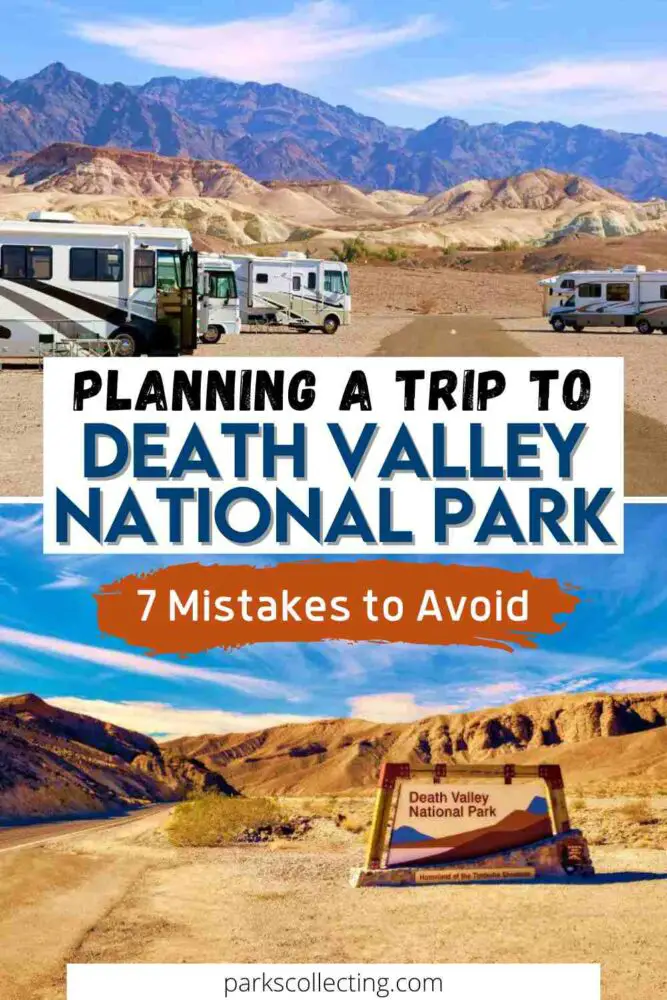
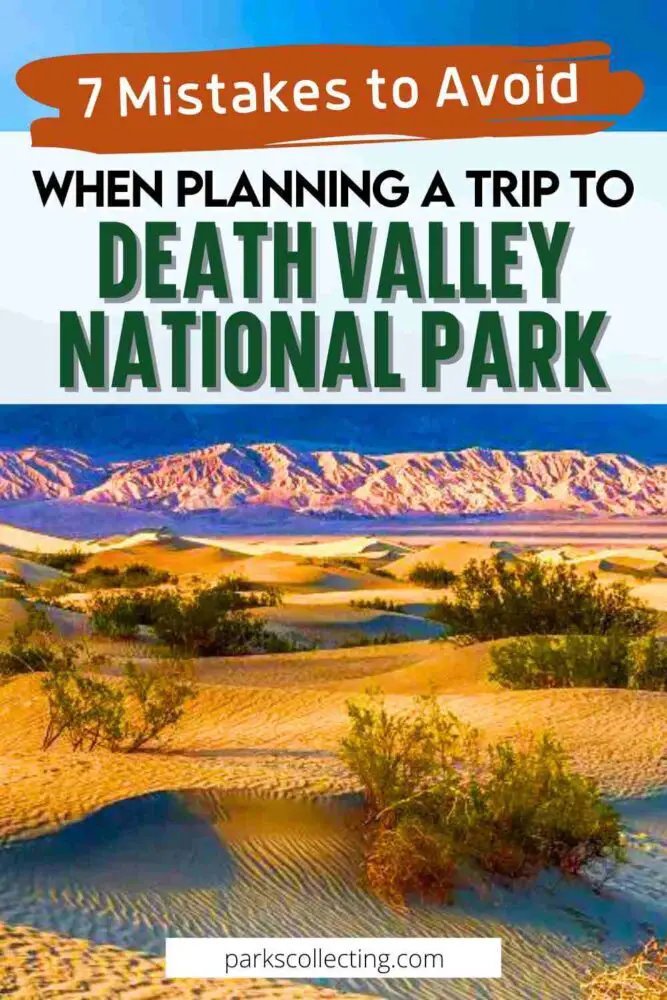
🛏️TOP HOTEL PICK: Check availability now
🚘FIND THE CHEAPEST CAR RENTAL: Search Discover Cars for the best deals
✈️FIND THE CHEAPEST FLIGHTS: Search Skyscanner for the best deals
🧳GET TRAVEL INSURANCE: Get insured with Travelex before you go
📱TAKE AN AUDIO TOUR: Buy an audio tour now
Table of Contents
#1 Going in summer
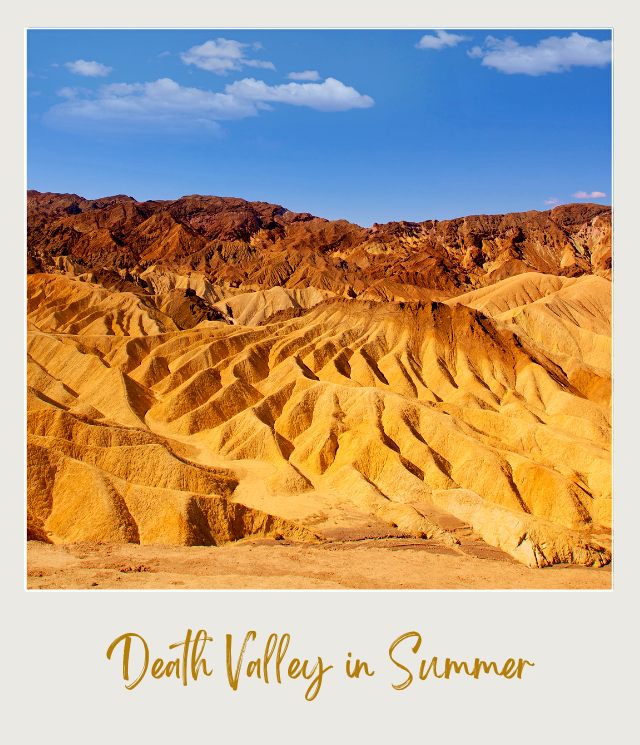
Death Valley in the summer, where do we even begin? Picture this: you’re strolling through the park, sun blazing down, and you’re thinking, “Wow, I must be on the surface of the sun!” because it’s just that hot. We’re talking temperatures that can literally make an egg sizzle on the hood of your car.
Sure, visiting Death Valley in the summer does come with some serious bragging rights – “I survived the scorching heat of the hottest place on Earth!” – but in reality, the heat is not just unpleasant, it’s also dangerous.
Now, don’t get me wrong, Death Valley is amazing year-round, but if you really want to enjoy the park to its fullest, winter (and even spring and fall) is much more comfortable. Imagine serene hikes, comfortable picnics, and the ability to explore without feeling like you might spontaneously combust. The cooler months are your golden ticket to a pleasant adventure in this otherworldly landscape.
So, when planning your Death Valley escapade, think about this: wouldn’t you rather enjoy the park’s stunning salt flats, colorful rocks, and epic sand dunes without feeling like you’re about to die from the heat? Winter has cooler weather, fewer people, and all the unobstructed views you can handle.
#2 Planning activities for the whole day
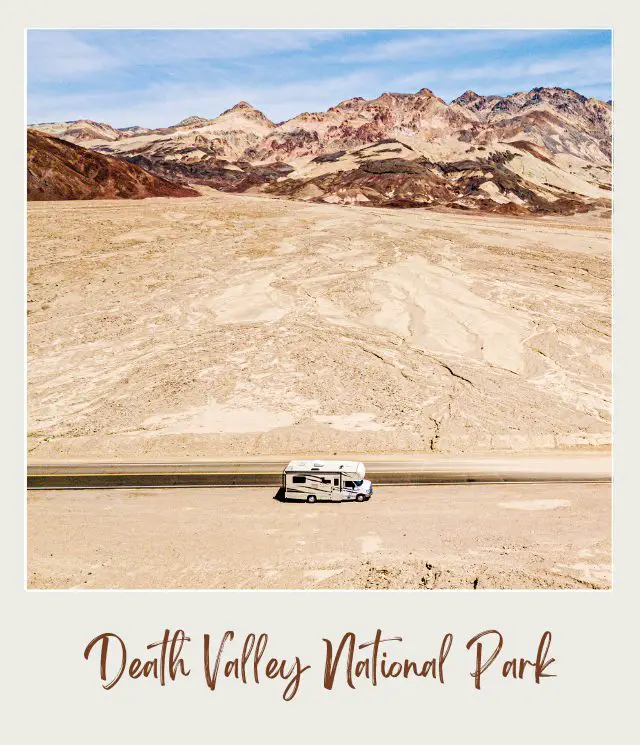
If you do visit in summer, a common mistake to avoid is thinking you can jam-pack your day with back-to-back activities under that unforgiving summer sun.
So, if summer is the only time to can make it to the park, you’ve got to plan accordingly. Morning? Great for exploration. Evening? Perfect for a sunset that’ll knock your socks off. But midday? That’s your cue to channel your inner vampire and avoid the sunlight.
If you visit in summer, the NPS strongly recommends hiking before 10:00 AM and aiming for higher altitudes where it’s cooler. The heat is especially dangerous from 10:00 AM to 4:00 PM, and your best defense is a good offense – which, in this case, means chilling indoors. Think of it as a siesta where you can relax, hydrate, and plan your epic evening adventures. Spend time at the Visitor Center, hang out in the pool, or stay inside with the AC on.
And if you’re thinking, “But I’ll miss out on so much!”, remember that Death Valley’s night sky is a whole other world. Stargazing here is like a cosmic light show, minus the sweat. So, plan for a cooler, star-filled night-time jaunt instead of a midday marathon. Your body (and sanity) will thank you.
#3 Only spending a few hours there
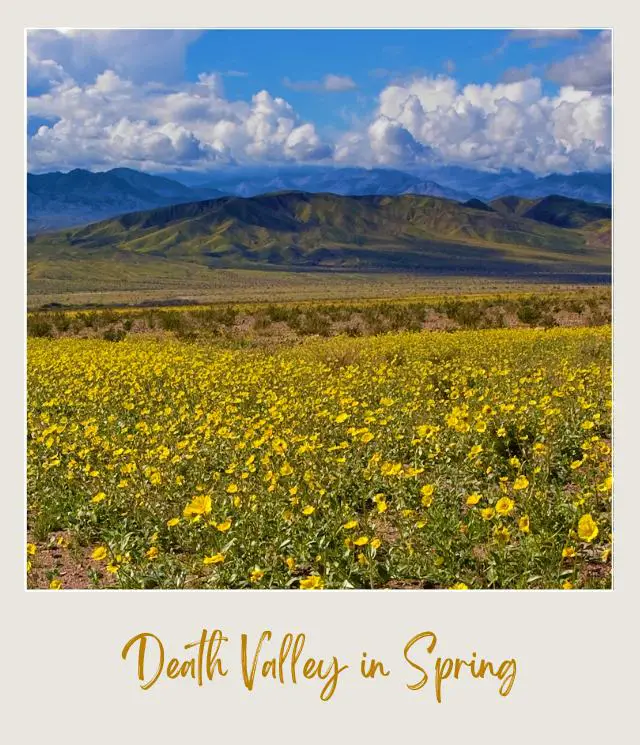
Thinking that a quick pit stop in Death Valley is enough is a big mistake. I know that the name “Death Valley” doesn’t exactly scream “stay awhile,” but trust me, zipping through would be like speed-reading the last page of a mystery novel; you miss all the good stuff!
This place is a gold mine of natural wonders. We’re talking salt flats that make you feel like you’ve landed on another planet, sand dunes that’ll have you channeling your inner Lawrence of Arabia, and viewpoints that’ll give your Instagram followers some serious FOMO. And that’s just scratching the surface.
So, give yourself the gift of time. Whether it’s hiking through canyons, cruising along Artists Drive, or just soaking in the views at Zabriskie Point, there’s a whole world of epic out there waiting for you. Don’t sell your adventure short; Death Valley deserves more than a fleeting glance – it deserves a full-on, eyes-wide-open, “wow, this is awesome” kind of day (or two!).
#4 Buying gas inside the park
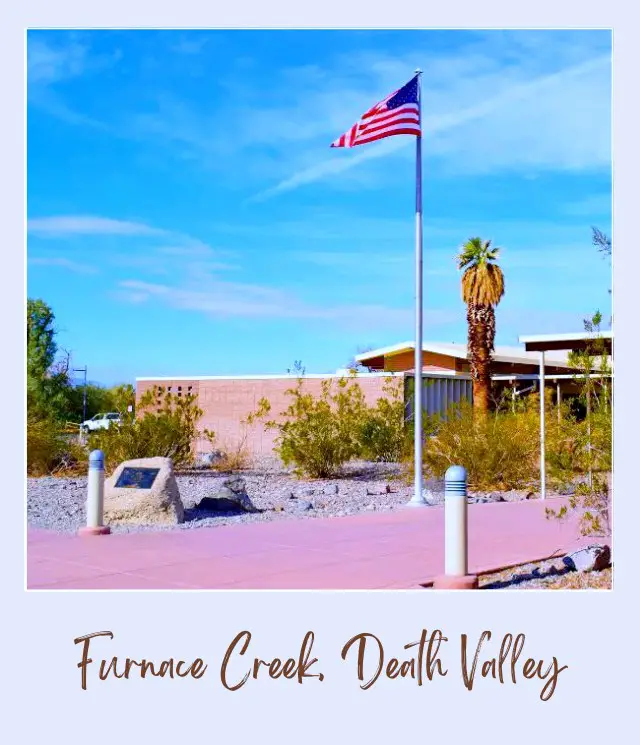
Gas prices in Death Valley are painful! You can find gas at Furnace Creek, Stovepipe Wells, and Panamint Springs, but you’ll be paying top dollar.
So, avoid this mistake and save some money by fueling up before you get to the park.
If you’re coming from the east, full up in Las Vegas, then top up in Beatty, NV or Shoshone, CA . If you’re coming from the west, then Trona or Ridgecrest are good choices. These spots are like an oasis for your wallet, offering gas prices that won’t make you gasp.
#5 Not checking the weather
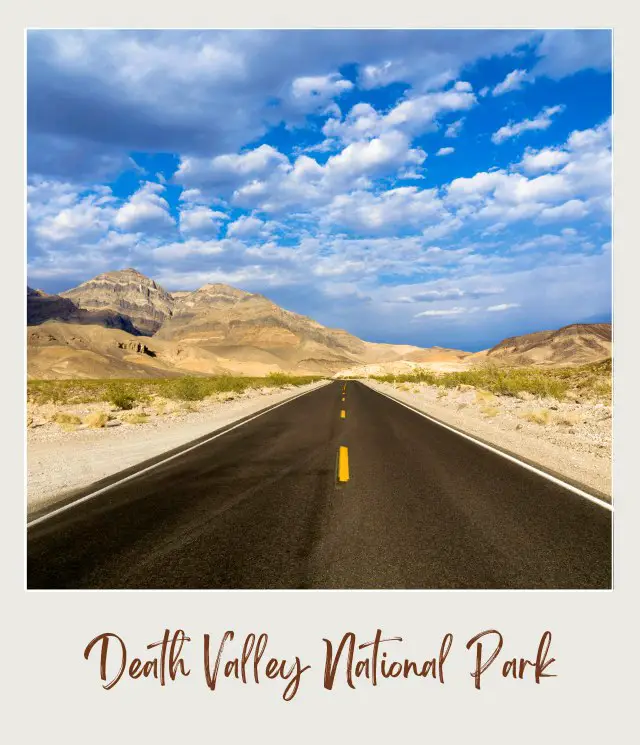
Ignoring the weather forecast because “it’s just a desert, right?” is wrong. Death Valley’s weather can be very unpredictable with sudden – and sometimes violent – storms.
Flash floods are no joke here. In recent years, roads have been damaged and the park has had to shut down unexpectedly due to severe weather.
So, before you head out, do a quick weather check. The National Weather Service or the park’s official website are your go-to sources for the latest updates.
#6 Staying in your vehicle
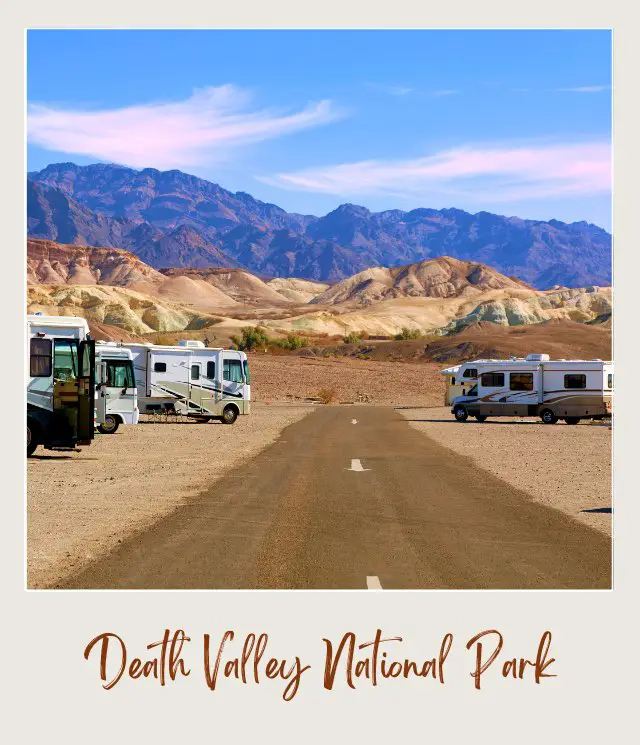
Treating your car like a mobile bubble and not stepping foot on the trails is another mistake to avoid, if possible. If you’ve got the mobility, then I really recommend walking (as much as is safe in the heat when you go). Sure, Death Valley looks stunning from your window, but you’re not getting the full sensory experience unless you’re out there, feeling the gravel underfoot and the desert breeze on your cheeks.
Take the Badwater Salt Flat trail, for example. It’s the lowest point in North America, and that crunchy salt beneath your feet? It’s like nature’s own carpet. Or imagine wandering through the natural maze of Golden Canyon, surrounded by golden-hued hills – it’s like stepping into a real-life painting.
And let’s not forget the Mesquite Flat Sand Dunes. Here’s your chance to leave your mark (temporarily, of course) on some of the most photographed dunes in the world. Each step is a mini adventure in itself.
So, roll down those windows, crank up your favorite tunes, and drive to the trailhead. Then get out and let your feet introduce you to the real Death Valley. It’s an experience that goes beyond any drive, no matter how scenic it may be.
➡️ READ MORE: Best Hikes in Death Valley National Park
#7 Not getting travel insurance for your Death Valley vacation
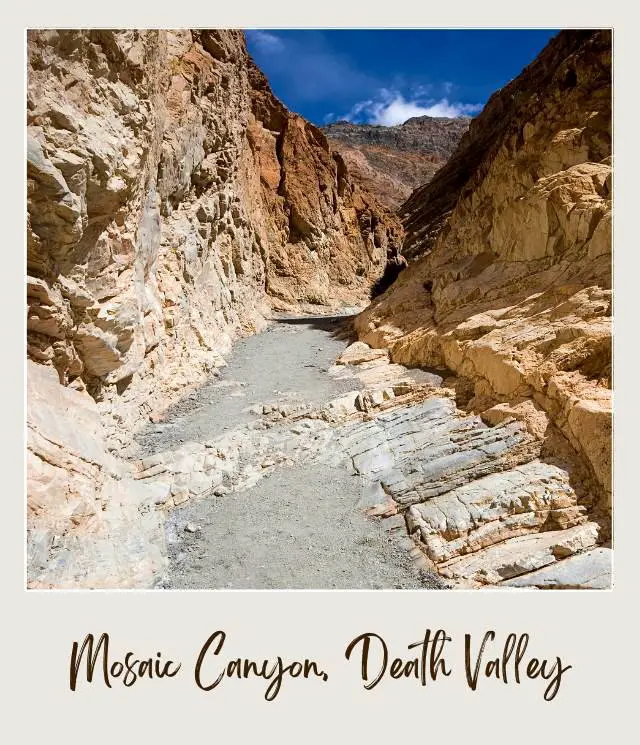
Death Valley may be famous for being hot and dry, but as I mentioned above, it actually also gets incredible fierce – and dangerous – storms. Those, combined with risks that coming from being really hot and dry, make it an essential place to have travel insurance.
Travel insurance also covers things like lost or stolen property, trip cancellation, and emergency repatriation. If you want to learn more about all this, check out my Guide to Buying Travel Insurance (on my other blog) before getting your insurance.
➡️ A great insurance option is Travelex. It has coverage for all you’ll need. You can compare Travel Insurance plans here or get a quote right now:
Additional Planning Resources for travel to Death Valley National Park
⭐ 10 Tips for Visiting Death Valley National Park
⭐ Best Hikes in Death Valley National Park
⭐ 10 Fun Facts About Death Valley National Park
⭐ The Closest Airport to Death Valley National Park
⭐ All The Airports Near Death Valley National Park
⭐ How to Get to Death Valley National Park
⭐ Best Time To Visit Death Valley National Park
⭐ Visiting Death Valley National Park: What To Expect Throughout the Year
Subscribe to daily national parks planning tips, travel inspiration and trip ideas and get instant access to the free PDF of this guide:
“7 Mistakes to Avoid When Planning A Trip to Death Valley National Park”
Enjoy your Death Valley trip! Do you have any other tips for visiting Death Valley National Park? I’d love to hear about them. Join my private Facebook group National Parks Collectors and comment and let me know (you can also pick up extra planning tips, share your photos and stories with other national park lovers and more).
If you liked this Death Valley National Park travel guide, Pin It to your Death Valley National Park board!


💡 Are you just starting to think about taking a national parks trip? Get Inspiration
‼️ Are you looking for helpful tips for visiting US national parks? Read articles that share useful tips on a range of national-park related issues
💻 Are you starting to plan a trip to Death Valley National Park? Read my Guide to Death Valley National Park
💲 Are you ready to book your trip? Use these Planning and Booking Resources
📖 Do you want to read a book about US national parks? Check out my Recommended Reading Lists
About the Author
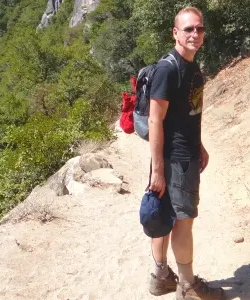
James Ian is a national park, camping and hiking expert.
He has dedicated his life to travel, visiting more than 80 countries, all 7 continents and most of the national parks in the United States. With over 35 years experience in the travel industry, James has worked on cruise ships, at resorts and hotels, and as a travel planner who’s helped hundreds of people plan successful trips to US national parks.
Based on his experience visiting our national parks multiple times, in-depth research and expertise as a travel planner, James has published detailed itineraries for many of the major national parks in the US. These itineraries, as well as in-depth park guides, and other resources will help you have your own incredible trip to US national parks without stress and hassle.
As a national park expert, James has contributed to many publications, including USA Today, Newsweek, Time Business News, Savoteur, Best Trip, and Wired.
I’m a member of the Amazon Services LLC Associates Program. As an Amazon Associate I earn from qualifying purchases.
